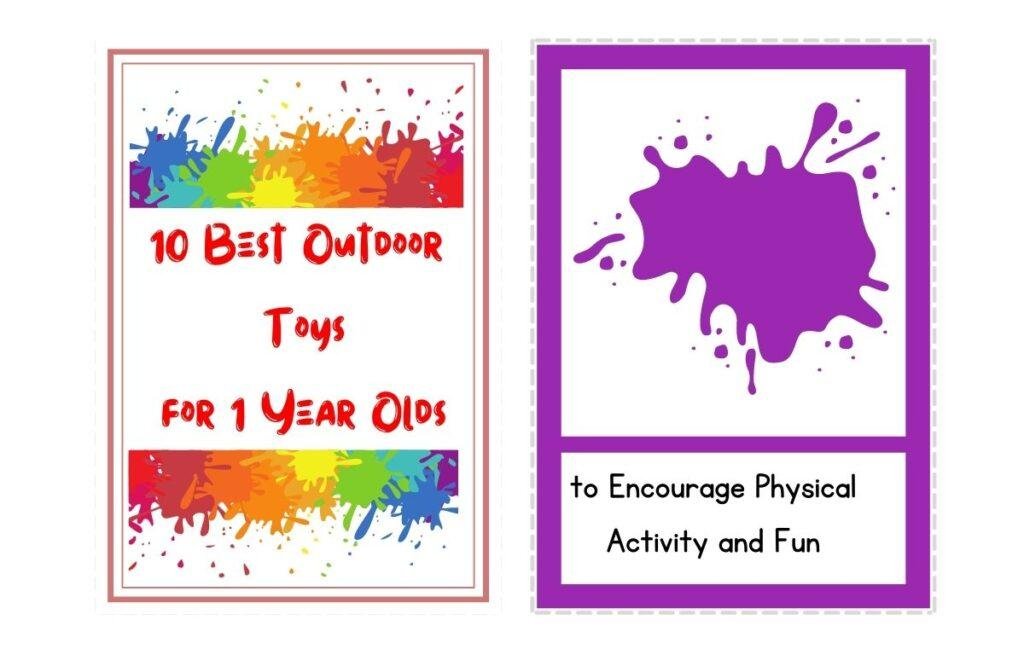In a world where the pressures of academic performance and social expectations weigh heavily on young shoulders, nurturing a child’s imagination and creativity often falls by the wayside. Many children find themselves confined to rigid educational structures that leave little room for the exploration of their unique talents and magical abilities.
The solution lies in recognizing and fostering these innate gifts from a young age. By creating environments that celebrate creativity and curiosity, we can help children unlock the magic within them, allowing them to flourish both personally and academically.
Read on to discover how fostering a child’s mystical potential can lead to incredible developmental benefits and lifelong success. Explore the practical strategies and inspiring stories that can help bring out the magical kids in all of us.
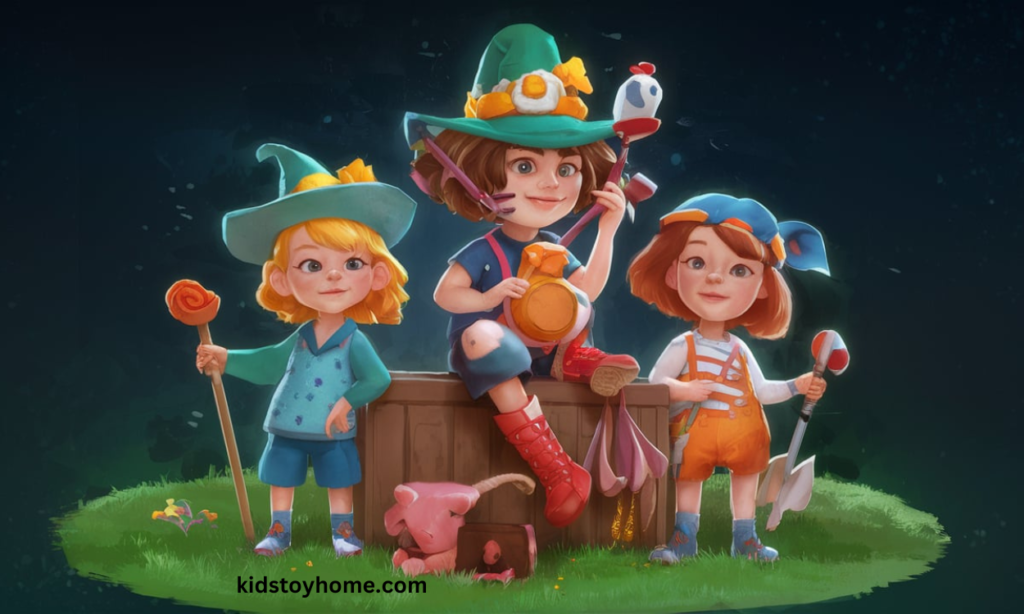
Magical Children
Magical children, like the mystical phenomena described in books and collections, are often central to many enchanting narratives. These young characters typically possess inherent supernatural abilities or unique gifts, distinguishing them from ordinary children.
Their stories are intertwined with the magical realms found in countless literary works, making them a vital element in the rich tapestry of fantastical storytelling. The concept of magical children serves as a bridge, linking readers to the magical worlds depicted in various collections, thereby enhancing the sense of wonder and discovery.
Understanding the definition and role of magical children is crucial, as it underscores their relevance and significance within the broader scope of magical literature and the background information surrounding these captivating tales.
Exploring magic in children’s literature holds tremendous importance, as it ignites the imagination of young readers and transports them into realms where the ordinary seamlessly blends with the extraordinary.
Magical children’s books often introduce a plethora of mythical creatures, ranging from dragons and fairies to unicorns and wizards, each adding a layer of enchantment and curiosity. These imaginative stories not only provide an escape from the mundane but also embed valuable lessons that resonate deeply with children.
Themes such as courage, friendship, and resilience are frequently woven into these narratives, teaching young readers about the complexities of life through the lens of fantastical adventures. The exploration of these magical worlds inspires creativity, fosters a love for reading, and cultivates an enduring sense of wonder. Through the enchanting tales of magical children’s books, children are encouraged to dream big and believe in the limitless possibilities of their own imaginations.
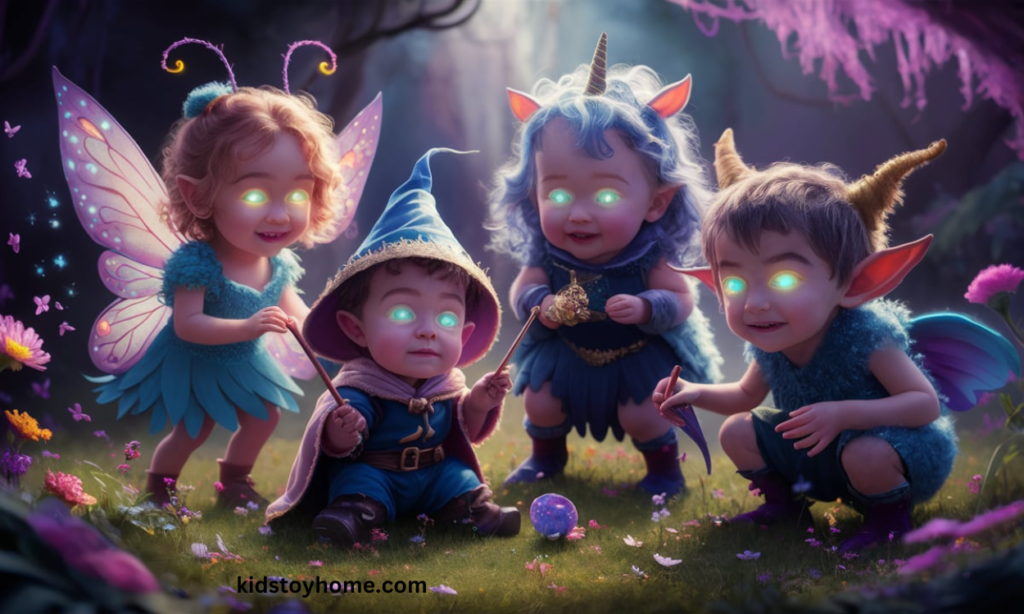
The Origins of Magical Characters
Magical characters have long fascinated audiences and readers alike, weaving their way through the fabric of folklore, mythology, and literature. These enchanting beings often possess supernatural powers and abilities that transcend the ordinary, allowing them to perform extraordinary feats. The origins of magical characters can be traced back to ancient civilizations, where early mythological figures such as gods, goddesses, and mythical creatures were imbued with mystical properties. Stories from Ancient Greece, Egypt, and Norse mythology laid much of the foundation, introducing us to figures like Hermes, Isis, and Loki. Over time, these archetypes evolved, and fairy tales and epic sagas started featuring wizards, witches, fairies, and other magical personas, each playing pivotal roles in their narratives. Today, magical characters continue to captivate modern audiences in various forms of media, from fantasy novels and movies to video games and TV series, preserving the timeless allure of the mystical and the wondrous.
Trials and Triumphs
As we delve deeper into the enchanting world of magical children, it is essential to explore the origins of these mystical characters, understand the pivotal role mentors play in their journeys, and examine the trials and triumphs that shape their paths. These elements not only add depth to the narratives but also contribute significantly to the development of the protagonists, making their stories compelling and inspirational for readers of all ages.
The Significance of Imagination and Creativity
Imagination and creativity hold immense significance in the realm of magical children’s literature, serving as the bedrock upon which these enchanting stories are built. These traits are not only central to the act of storytelling but also to the broader spectrum of childhood development, fostering a sense of wonder and igniting a passion for discovery.
Imagination enables children to visualize worlds beyond the confines of reality, allowing them to explore innovative scenarios and develop unique narratives. This innate ability to dream up fantastical realms and characters paves the way for unparalleled innovation, encouraging young minds to approach problems with fresh perspectives and inventive solutions.
Creativity, closely intertwined with imagination, goes hand in hand with fostering problem-solving skills. When children immerse themselves in magical stories, they encounter various dilemmas and challenges faced by the characters. By engaging with these narratives, children learn to think critically and devise original responses to the obstacles they encounter, nurturing their problem-solving abilities in the process. The significance of these traits lies in their capacity to inspire unique and original ideas, making children more adept at thinking outside the box and enhancing their overall productivity.
Moreover, the emphasis on imagination and creativity in magical children’s literature equips young readers with the tools to generate innovative solutions to real-world problems.
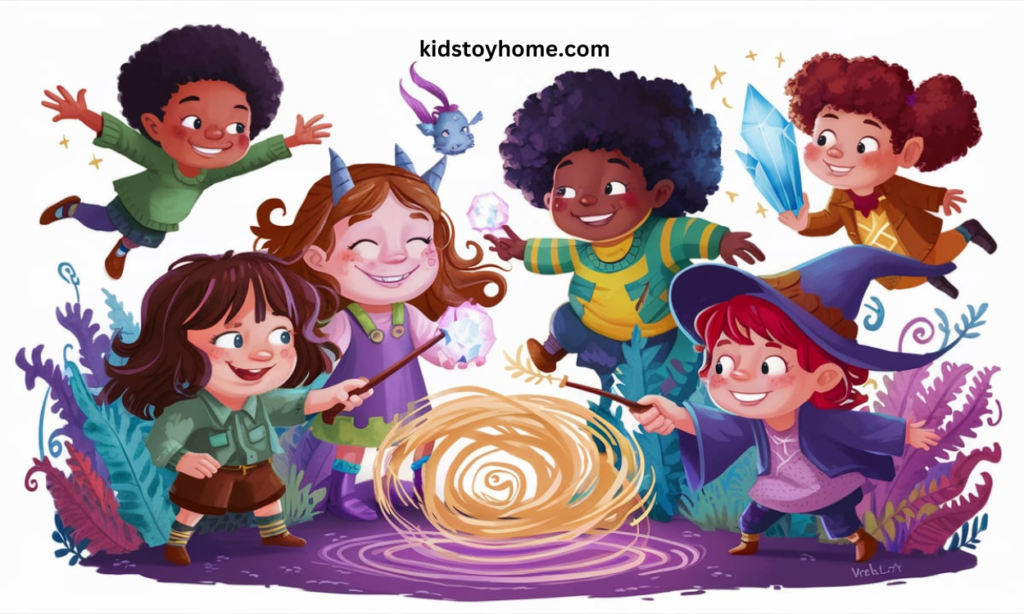
The lessons learned from the whimsical, yet meaningful, journeys of magical children inspire readers to embrace their creative instincts and explore uncharted territories in their own lives.
By doing so, they cultivate a mindset that values innovation, encourages unorthodox approaches, and ultimately leads to groundbreaking achievements. Through the power of imagination and creativity, children are not only entertained but are also empowered to become original thinkers and adept problem solvers, capable of envisioning and implementing the extraordinary in their everyday lives.
The Concepts of Empathy and Compassion
Empathy and compassion are two fundamental concepts that play a crucial role in cultivating positive relationships and fostering harmonious interactions. Empathy, at its core, is the ability to understand and share the feelings of others. It allows individuals to put themselves in someone else’s shoes, experiencing their emotions and perspectives as if they were their own. This deep sense of understanding bridges the emotional gap between people, paving the way for meaningful connections and mutual respect.
Compassion, on the other hand, goes a step beyond empathy by motivating acts of kindness and support. While empathy allows us to feel what others are going through, compassion compels us to take action to alleviate their suffering. It is the driving force behind charitable deeds, emotional support, and acts of generosity that strengthen the bonds within a community. Compassion signifies an outward expression of concern and solidarity, transforming understanding into tangible efforts to help others.
Practicing empathy and compassion brings about numerous benefits, both on an individual and societal level. These traits promote deeper understanding and reduce conflict by allowing people to see beyond their own experiences and consider the perspectives of others. This can lead to more effective communication and problem-solving, as individuals are better equipped to address grievances and find common ground. Furthermore, empathy and compassion foster a sense of community, as acts of kindness and support strengthen social ties and build trust among members. By cultivating an environment where people feel seen and valued, these virtues contribute to a more cohesive, caring, and resilient society.
Fostering Curiosity and Wonder
Curiosity and wonder are powerful driving forces behind lifelong learning and exploration. Nurturing these qualities in children can ignite their passion for discovery and intellectual growth. To foster curiosity and wonder, it is essential to create an environment that encourages questioning and provides ample opportunities for hands-on experiences. By presenting children with new and engaging stimuli, whether through nature walks, science experiments, or exposing them to diverse cultures, we can spark their innate desire to explore and understand the world around them.
Curiosity-driven activities allow children to delve deeper into subjects that captivate their interest, enhancing their learning experience. For example, a child fascinated by space might be encouraged to build a model of the solar system, investigate the phases of the moon, or even track the movement of constellations. These activities satisfy their curiosity while simultaneously providing educational benefits. Similarly, a sense of wonder can be kindled by exploring a butterfly garden, prompting questions about metamorphosis, ecology, and conservation. Through this hands-on approach, children develop critical thinking skills and build a deeper appreciation for the intricacies of the natural world.
Encouraging questions is a fundamental aspect of fostering curiosity and wonder. Questions open the door to new knowledge and lead to innovative discoveries. Allowing children the time and space to explore their questions without immediate answers cultivates a mindset geared towards investigation and critical assessment. It’s crucial to create a supportive atmosphere where inquisitiveness is celebrated, and questions are welcomed. By demonstrating patience and enthusiasm in responding to their inquiries, adults can model inquisitive behavior and validate the importance of seeking knowledge.
Furthermore, dedicating time and resources to exploration is paramount. Incorporating unstructured play and discovery periods into daily routines provides children with the freedom to follow their interests and engage in self-directed learning. Whether through free play, artistic creation, or scientific observation, the opportunity to explore nurtures a child’s sense of curiosity and wonder, laying a robust foundation for lifelong learning. By prioritizing curiosity and wonder, we empower children to become enthusiastic learners and explorers, continually driven to uncover the mysteries of their world.
In conclusion, by fostering curiosity and wonder, we not only enrich the educational journeys of young minds but also instill an enduring love for learning. This approach equips children with the tools to become innovative thinkers and proactive problem-solvers, prepared to tackle future challenges with curiosity and enthusiasm.
Cultivating a child’s innate potential and holistic development requires a multifaceted approach. By focusing on aspects such as creativity, empathy, compassion, curiosity, and wonder, we can help them grow into well-rounded individuals. The subsequent sections delve into the practical methods and benefits of nurturing these essential qualities, ultimately guiding children towards a fulfilling and enriched life.
The Benefits of Incorporating Magic into Online Learning Programs
Incorporating magic into online learning programs can significantly enhance engagement and provide a multitude of educational benefits. Magic, with its captivating and mysterious nature, holds the potential to transform traditional learning experiences into dynamic and memorable ones. Here’s how magic can be a powerful tool in online education:
Enhancing Engagement
Magic naturally captures attention and stimulates curiosity, making it an excellent method for engaging students in an online learning environment. The element of surprise and the visual appeal of magic tricks can make lessons more interesting and enjoyable, encouraging students to be more attentive and active participants in their learning journey.
Promoting Critical Thinking
Performing and understanding magic tricks requires a strong grasp of critical thinking and logical reasoning. When students are challenged to decipher how a trick is performed or to create their own magical illusions, they hone their analytical skills. This process involves hypothesis forming, testing, and refining—core components of scientific and mathematical thinking that are essential in solving complex problems.
Improving Problem-Solving Skills
Magic often presents puzzles that need to be solved, which actively engages students in problem-solving. By navigating through the various steps of a trick, students learn to break down problems into manageable parts, identify patterns, and think creatively to find solutions. These skills are not only beneficial in academic contexts but also in everyday life.
Providing Real-World Examples
Magic can serve as a practical illustration of various theoretical concepts. For instance, principles of physics, chemistry, and mathematics can be demonstrated through magic tricks, offering real-world examples that make abstract ideas more concrete and understandable. This approach can bridge the gap between theory and practice, fostering a deeper comprehension of the subject matter.
Increasing Motivation
The intrigue and excitement sparked by magic can increase students’ motivation to learn. When students are engaged and curious, they are more likely to participate actively, complete assignments, and pursue further learning independently. Incorporating magic into online programs can reignite students’ passion for learning, making education a thrilling adventure.
In conclusion, magic offers a unique and effective way to enhance online learning programs. By incorporating elements of magic, educators can boost engagement, promote critical thinking, improve problem-solving skills, provide real-world examples, and increase motivation among students. This innovative approach not only enriches the learning experience but also nurtures essential skills that students will carry with them beyond the classroom.
Examples of Interactive Magic E-Learning Platforms for Kids
Several interactive magic e-learning platforms offer engaging and educational experiences, effectively incorporating magic and interactive elements to captivate children’s attention while promoting learning. Here are notable examples:
1. Magic School Online
Magic School Online is a platform dedicated to teaching kids the art of magic while integrating educational content. By using interactive magic lessons, children learn scientific concepts such as physics through practical demonstrations. The platform’s engaging and educational experiences keep young learners intrigued and motivated.
2. Discovery Magic Academy
Discovery Magic Academy blends traditional curriculum subjects with the allure of magic. This interactive magic e-learning platform provides hands-on activities that teach mathematical principles and problem-solving skills using magic tricks. The interactive elements and narratively rich coursework captivate children’s attention, making learning fun and memorable.
3. Spellbound Learning
Spellbound Learning focuses on promoting learning through curiosity and wonder. This platform uses a combination of virtual magic shows and interactive workshops where children participate in performing magic tricks that highlight educational subjects. These captivating and interactive elements help foster a deeper understanding of concepts in an entertaining manner.
4. Magic Box Education
Magic Box Education offers a treasure trove of interactive magic e-learning activities designed to stimulate young minds. The platform includes a variety of magic-themed educational games and tutorials that address different topics such as history and language arts. By incorporating magic, these activities make learning engaging and enjoyable for children.
These interactive magic e-learning platforms serve as excellent examples of how magic and educational content can be intertwined to create captivating and educational experiences. By leveraging magic and interactive elements, these platforms successfully promote learning while keeping children engaged and excited about their educational journey.
Interactive magic e-learning platforms have transformed the way children engage with educational content, seamlessly blending fun with learning. Through the allure of magic and hands-on activities, these platforms captivate young minds, making complex concepts more accessible and learning more enjoyable. The following sections will delve into notable examples of these innovative platforms and explore how they are reshaping education.
Impact of Magic on Children’s Books
The impact of magic on child readers is profound and multifaceted, playing a significant role in their cognitive and emotional development. Magic in children’s books serves as a powerful tool to stimulate imagination, foster a sense of wonder, and ignite a lifelong love for reading. By weaving fantastical elements into stories, authors can capture the minds of young readers, encouraging them to dream beyond the confines of reality.
Firstly, the inclusion of magic in narratives helps to stimulate imagination. When children encounter magical worlds filled with wizards, enchanted forests, and mystical creatures, their creativity is sparked, allowing them to visualize and empathize with characters and scenarios far removed from their everyday experiences. This imaginative process is crucial for cognitive development, as it enhances problem-solving abilities and critical thinking.
Secondly, magic fosters a sense of wonder in young readers. The sheer unpredictability and enchantment of magical elements instill a feeling of awe and curiosity. This sense of wonder not only makes reading more enjoyable but also encourages children to ask questions and seek knowledge, laying the groundwork for a curious and inquisitive mindset.
Lastly, books infused with magic can ignite a love for reading by making stories more engaging and entertaining. When children find joy and excitement in reading magical tales, they are more likely to develop a positive attitude towards books. This early love for reading can evolve into a lifelong habit, enhancing their overall literacy and academic performance.
In conclusion, the impact of magic in children’s books is substantial, benefiting child readers by stimulating their imagination, fostering a sense of wonder, and igniting a love for reading. The magical realms created by authors serve not only as a source of entertainment but also as a catalyst for profound cognitive and emotional growth.
Utilizing Magic in Classroom Settings
Expanding the use of magic beyond children’s books and e-learning platforms, incorporating magic into classroom settings can revolutionize traditional teaching methodologies. By blending enchanting activities with curriculum subjects, educators can create an immersive learning environment that enhances student engagement and participation. This approach fosters a stimulating and dynamic atmosphere, making lessons memorable while simultaneously promoting a deeper understanding of complex concepts.
Advantages of Smart Toys in Enhancing Children’s Cognitive Development
Smart toys present numerous advantages in enhancing children’s cognitive development, leveraging interactive play to stimulate various aspects of learning and growth. According to data from background research, these toys play a pivotal role in improving problem-solving skills, language development, critical thinking, and creativity.
Firstly, interactive play provided by smart toys engages children in dynamic and hands-on experiences. Unlike traditional toys, smart toys can adapt to a child’s responses, providing personalized feedback that can scaffold learning. Activities such as puzzle-solving or interactive storytelling help children develop problem-solving skills by challenging them to think critically and find solutions independently.
Moreover, the use of smart toys has a significant impact on language development. Many smart toys incorporate verbal instructions, storytelling features, and vocabulary-building activities, which facilitate language acquisition and comprehension. Interacting with these toys allows children to practice new words and phrases, enhancing their communication abilities in a playful and engaging manner.
Critical thinking is another area where smart toys make a notable contribution. By presenting children with scenarios that require analysis, evaluation, and judgement, these toys encourage the development of logical reasoning and decision-making capabilities. Games and activities integrated within smart toys often require children to strategize, plan, and reflect upon their actions, thereby fostering critical thought processes.
Finally, smart toys stimulate creativity by allowing children to explore different scenarios, create new stories, and experiment with arts and crafts. The open-ended nature of many smart toys ensures that children can express themselves freely, thinking outside the box and tapping into their imaginative potential.
In conclusion, the integration of smart toys into children’s playtime significantly boosts cognitive development by promoting interactive play, enhancing problem-solving skills, language development, critical thinking, and creativity. These toys offer an enriching blend of education and entertainment, paving the way for holistic growth in young learners.
Top Recommended Smart Magic Toys for Kids
1. Magic Mixies Magic Cauldron
One of the standout smart magic toys is the Magic Mixies Magic Cauldron. This toy offers an interactive potion-making experience where children can create their own magical creatures. The cauldron includes various magical ingredients and a wand, allowing children to mix and watch as their creation comes to life with mist and lights. Features of the Magic Mixies Magic Cauldron include interactive potions, misty effects, and sound responses. The benefits include stimulating creativity, encouraging imaginative play, and enhancing fine motor skills. Tested by the Wicked Uncle Elves, this toy is guaranteed to captivate and delight any young magician.

2. Osmo – Magic Kit for Kids
The Osmo – Magic Kit for Kids brings together digital and physical play, making learning magical. This kit includes a drawing board and an interactive app that turns drawings into animations. Features include real-time feedback, interactive games, and easy set-up. The benefits are numerous, including improving drawing skills, fostering creativity, and providing a fun, educational experience. Thoroughly tested by the Wicked Uncle Elves, this smart magic toy is guaranteed to be a hit with children.
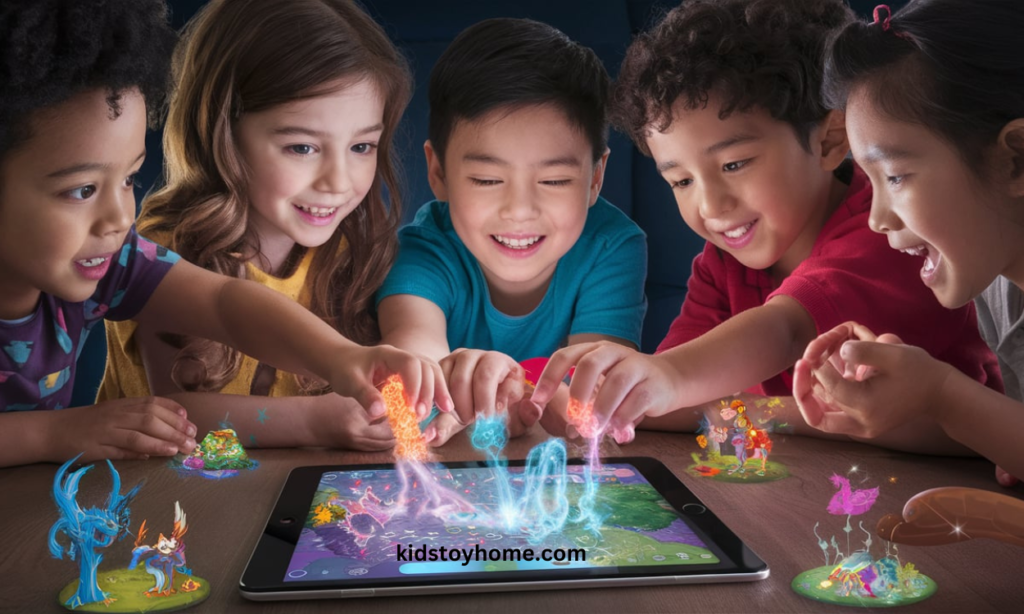
3. Harry Potter Coding Kit
For older kids, the Harry Potter Coding Kit merges the magic of Hogwarts with the fundamentals of coding. This kit comes with a magic wand that children can program to perform spells, making coding a magical experience. Features of this toy include a programmable wand, multiple spell instructions, and interactive challenges. The benefits are vast, with children learning coding basics, enhancing problem-solving skills, and enjoying an introduction to STEM education. Approved by the Wicked Uncle Elves, this smart magic toy is guaranteed to enthrall young wizards and witches.
These smart magic toys have been specifically chosen and rigorously tested by the Wicked Uncle Elves to ensure they are both entertaining and educational. Their innovative features and remarkable benefits make them perfect gifts for children, offering a blend of magic and learning that is guaranteed to inspire and delight.
Conclusion
In conclusion, the exploration and integration of magic into educational experiences profoundly impact children’s cognitive and emotional development. From enhancing classroom learning with enchanting activities to utilizing interactive magic e-learning platforms, incorporating magic transforms conventional education into an immersive and captivating journey.
Additionally, smart toys and magical narratives in literature stimulate imagination, foster creativity, and promote curiosity, laying a solid foundation for lifelong learning and innovation.
By nurturing these essential qualities and providing dynamic, engaging environments, we empower children to unlock their magical potential, leading to enriched lives filled with wonder and boundless possibilities. The journey of fostering magical abilities in children is indeed a celebration of their unique talents, paving the way for their personal and academic growth.
FAQs
Names of magical kids movies.
- Harry Potter and the Sorcerer’s Stone
- Matilda
- The Chronicles of Narnia: The Lion, the Witch and the Wardrobe
- Howl’s Moving Castle
- The Secret Garden
- Hocus Pocus
- Labyrinth
- Hook
- James and the Giant Peach
What are nat geo kids?
Nat Geo Kids is a branch of the National Geographic Society that focuses on creating educational and entertaining content for children. It was established in 2010 to inspire young minds to explore the world around them, spark curiosity, and foster a deep appreciation for nature and wildlife.
Give some magical kids shop names.
There’s something truly enchanting about a children’s shop. The colors, the toys, and the overall atmosphere make it feel like a whimsical wonderland. And when it comes to naming these shops, there are endless possibilities for creativity and magic.
Here are some ideas for magical kids shop names:
- Fairy Tale Treasures – This name evokes images of classic fairy tales and sparkly treasures that any child would love.
- Wizarding Wonders – A nod to the beloved Harry Potter series, this name is perfect for a shop filled with all things mystical and wizardry-related.
- Unicorn Dreams
